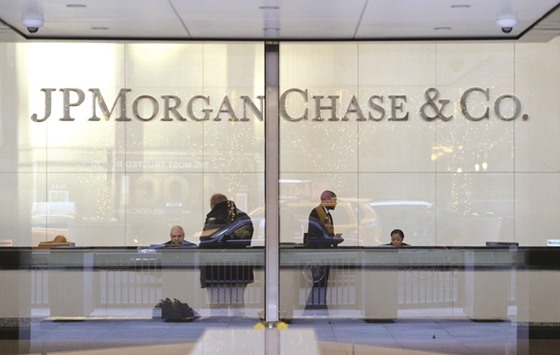JPMorgan Chase & Co, Bank of America Corp and three other major US banks failed to persuade regulators they could go bankrupt without disrupting the financial system and could now face a tighter leash from Washington after government agencies used one of the most significant post-crisis powers bestowed under the Dodd-Frank Act.
The banks - also including Wells Fargo & Co, Bank of New York Mellon Corp and State Street Corp - must scrap their so-called living wills after regulators said the submissions failed to satisfy their demands.
The rejected lenders will have until October 1 to rewrite their plans - but under the pressure that another failure would give the Federal Reserve and the Federal Deposit Insurance Corp power to subject them to more capital, liquidity or constraints on their businesses.
“The FDIC and Federal Reserve are committed to carrying out the statutory mandate that systemically important financial institutions demonstrate a clear path to an orderly failure under bankruptcy at no cost to taxpayers,” FDIC Chairman Martin Gruenberg said in a statement yesterday.
While those firms face the arduous process to overhaul strategies that sometimes run into thousands of pages, Citigroup can breath a sigh of relief, winning provisional approval from both agencies.
Goldman Sachs Group and Morgan Stanley also made it through without getting labeled with the term, “not credible,” because neither was found insufficient by both agencies - though Goldman Sachs was faulted by the FDIC and Morgan Stanley by the Fed.
The living-wills exercise was a key check on the biggest banks written into Dodd-Frank, the regulatory overhaul prompted by the 2008 financial crisis.
Lehman Brothers Holdings demonstrated what could happen when huge, complex financial firms land in bankruptcy court, so this process was designed to make sure big banks in the US are able to be wound down quickly without taking others with them.
Almost two years ago, 11 of the largest banks were told their plans fell far short of what regulators deemed acceptable.
Since then, the industry has rehashed how derivatives contracts are written, and the agencies have imposed tough capital and liquidity demands on each lender. Even so, bankers were anxious to hear whether their efforts had gone far enough.
The worst-case scenario for a bank that continually fails to make its case over the course of years is that regulators could eventually get authority to break them up, according to the law. Those are uncharted waters, because this marks the first time regulators have taken the initial step to find fault.
Each bank received a letter detailing the regulators’ expectations. The note to JPMorgan said it had made some improvements since its last submission but that it lacked “appropriate models and processes for estimating and maintaining liquidity.” The bank’s internal structure also fails to promote an easy resolution, the regulators said.
The living-wills setback for JPMorgan and others arrives as they announce first-quarter earnings. JPMorgan, the biggest US bank by assets, was up first with its earnings call.
The industry’s bad news comes just a day after banks learned they may get a break on future living-will efforts. The Fed and FDIC agreed to a few concessions after the Government Accountability Office found flaws in the process.
In response to GAO criticism, the two agencies said they will figure out a way to give banks more time to write the massive plans and also will disclose more about how they decide whether a bank’s plan is credible.
Though the annual filing deadline for the 12 largest banks is July 1, the eight US institutions the regulators responded to will be given until that date in 2017 for their next round, assuming the five that failed get their October plans approved. The agencies said they are still considering the living wills for four non-US firms, including Barclays, Credit Suisse Group, Deutsche Bank, and UBS Group.
“No firm yet shows itself capable of being resolved in an orderly fashion through bankruptcy,” FDIC Vice Chairman Thomas Hoenig, who has been critical of the process, said in a statement. “Thus, the goal to end too big to fail and protect the American taxpayer by ending bailouts remains just that: only a goal.”

The headquarters of JPMorgan Chase & Co in New York. JPMorgan, Bank of America and three other major US banks failed to persuade regulators they could go bankrupt without disrupting the financial system and could now face a tighter leash from Washington after government agencies used one of the most significant post-crisis powers bestowed under the Dodd-Frank Act.


